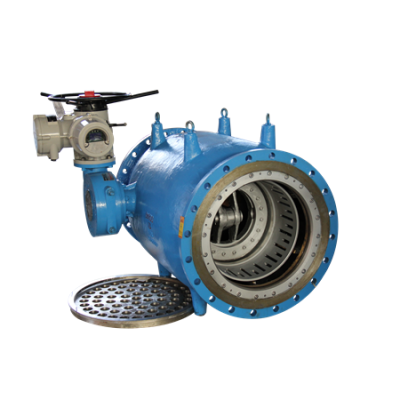
Plunger valve technology helps control water flow and pressure very well. Operators use the plunger valve to manage important systems and keep water safe. New studies show that a plunger valve with a sudden wider pipe behind it lowers damage from bubbles and shaking. This makes the system work better and last longer. In seawater desalination, plunger valve parts save more energy than a butterfly valve, ball valve, or electric valve. These new ideas help modern systems lose less water and work in a way that lasts a long time.
Plunger Valve Role
Flow Control
A flow control plunger valve is very important in big water projects. Engineers use the plunger to change how fast water moves. The plunger slides inside the valve and changes the opening size. This lets workers match the water flow to what the system needs. The design helps control water well, even in strong pipelines.
Operators use the plunger valve to keep water moving steady. The valve reacts fast when changes happen. This stops sudden jumps or drops in water flow. It keeps equipment safe and makes sure water goes everywhere it should. Using a plunger valve helps water systems work better and waste less water.
Tip: The flow control plunger valve can handle big changes in water flow. It does not make much noise or shake. This makes it good for places that need quiet water systems.
Pressure Regulation
Managing pressure is very important in water systems. The plunger valve is good at keeping pressure steady. It changes its opening using real-time data. In new systems, motorized plunger valves use sensors to check pressure in many places. A control valve with a special program moves the plunger to keep pressure right.
- Motorized plunger valves change their opening quickly using pressure data.
- A control system keeps moving the plunger to hold the right pressure.
- This way is better than old types of control valves.
- Lab tests show the pressure stays close to the set level.
- Models show plunger valves work well in real water systems.
- These systems help control pressure and can stop leaks in big water networks.
Using a plunger valve for pressure helps stop damage from high pressure. It also stops problems like pipes breaking. The plunger valve keeps water pressure steady, which is needed for cities and farms.
Water Loss Prevention
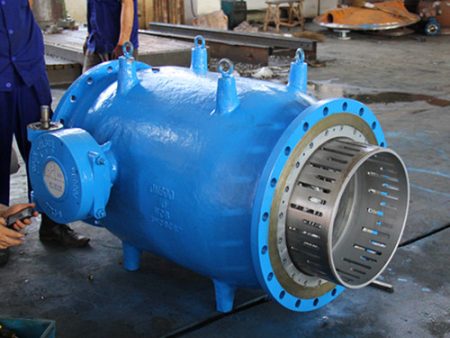
Stopping water loss is very important in big water systems. The plunger valve helps by letting workers control pressure and water flow exactly. Smart control systems, like the VAG RIKO plunger valve, change how they work as water flow and pressure change. These systems use time, flow, and remote controls to work better.
- The plunger valve lowers pressure, which cuts water loss and pipe breaks.
- In S?o Paulo’s Santo Amaro area, a test used plunger valves with sensors.
- The test saw 50% fewer new pipe breaks and 30% less water lost.
- The system gave clean water to 8,000 more people by saving water.
- Watching the system all the time and using remote controls helps fix problems fast.
- These results show plunger valves and smart controls are key for saving water.
Operators pick the plunger valve because it keeps water flow and pressure just right. This helps save water and protect resources. By stopping too much pressure and controlling flow, the plunger valve helps save water for the future.
Flow Control Plunger Valve Design
Structure
Plunger Mechanism
The flow control plunger valve uses a special plunger to manage water flow. The plunger moves inside the valve and changes the opening size. This helps match the water flow to what is needed. Engineers make the plunger smooth and shiny, often with stainless steel. This makes it strong and lasts a long time. The plunger reacts fast when water pressure changes. This helps keep the flow steady, even when pressure is high. A spring or diaphragm helps the plunger move quickly and smoothly. This design lets the valve respond to sudden changes in flow or pressure. It stops surges and keeps the system safe.
Sealing
Sealing is very important for the plunger valve to work well. The valve uses special sealing rings that are safe and strong. These rings fit tightly around the plunger and stop leaks. Engineers add metal rings to make the seal stronger. The sealing rings can go back to their shape after moving. This keeps the seal tight for a long time. Surface treatments protect the valve and plunger from rust and damage. These features help the valve work well and need little fixing.
| Feature/Material | Description |
|---|---|
| Plunger Material | Stainless steel, smooth and shiny for good sealing |
| Sealing Rings | Strong, slippery, and safe materials that last a long time |
| Surface Treatments | Special coatings to stop rust and damage |
| Design Features | Two sealing rings, metal support, and parts you can replace |
Energy Dissipation
The plunger valve controls how water moves to spread out energy. The plunger has special slots that slow down water and stop shaking. This protects pipes and equipment from sudden pressure jumps. It is important in systems where water speed changes quickly. The design also helps the valve work quietly and saves energy. This makes it good for big water projects.
Note: The plunger valve’s energy features help the whole system last longer.
Cavitation Reduction
Cavitation can hurt valves and pipes by making bubbles that pop hard. The plunger valve uses smart ways to stop this problem. Air is added before the valve to make small bubbles. These bubbles break up the bad bubble patterns. Even a little air, like 0.1%, helps a lot. Small bubbles work better because they stay in the water and protect the valve. Too much air can make the flow messy, so engineers use just enough. These features make the plunger valve a good choice for systems with fast water and changing pressure.
Operation
Manual
Operators use manual plunger valves in small water systems. They turn a handwheel or lever to move the plunger. This changes how much water can go through the valve. Workers use simple tools like a flow meter and pressure sensor. These tools help them check how the system is working. They look at the numbers to decide how much to open or close the valve. Manual control means workers must pay close attention. It works best where water needs do not change fast.
Note: Skilled workers must watch the supply pressure and adjust the valve when needed.
Automated
Automated plunger valves use electric or hydraulic actuators to move the plunger. These systems connect to a control panel. The panel gets signals from a flow meter and pressure sensor. It uses this data to move the valve to the right spot. Automated valves react faster than manual ones. They help keep water pressure and flow steady, even if demand changes. Hydraulic actuators work well when pressure is high. They move the plunger smoothly and with good control. Automated valves lower mistakes and make the system safer.
A normal automated system has:
- Electric or hydraulic actuator
- Flow meter to measure water movement
- Pressure sensor to watch for pressure changes
- Control panel to process data and send commands
Automated plunger valves help keep the system stable and efficient.
Smart Integration
Smart integration uses new technology for water flow control. Electric plunger valves now have actuators and sensors. These let workers make small changes using electronic signals. The valves connect to control systems like SCADA for remote control. Operators can see real-time data from each flow meter and pressure sensor on one screen. They can make quick choices and send commands without going to each site.
Smart systems give many benefits:
- Real-time alerts and checks for quick problem solving
- Remote changes to flow and pressure, so less manual work
- Better stability and efficiency for the whole network
- Hydraulic plunger valves keep flow steady under high pressure and lower wear
Electric and hydraulic plunger valves help manage water smartly. They use resources well, cut down on downtime, and support strong systems. Smart integration helps workers keep pressure steady and the system working, even in big and complex networks.
Hydraulic Operated Plunger Valve
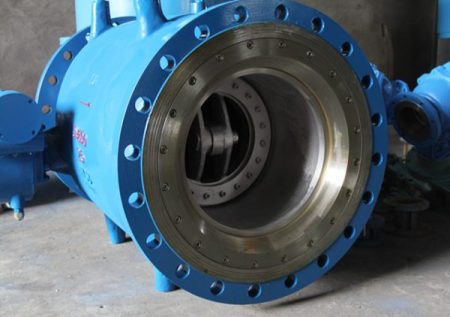
Dam Applications
Hydraulic operated plunger valve technology is very important for dams. Engineers use these valves to control water flow and pressure exactly. The plunger moves inside the valve when it gets hydraulic signals. This helps workers let out just the right amount of water. Dams need this for things like farming, drinking water, or making power.
Operators pick hydraulic operated plunger valve systems for many reasons:
- They let workers control water flow and pressure very well, which keeps dams safe.
- These valves can handle a lot of pressurized water, so they work for big dams.
- Their design stops leaks, which keeps areas below the dam safe and saves water.
- Makers use strong materials like brass and stainless steel, so the valves last in tough dam places.
- Safety parts, like check valves, stop water from going backward and help protect nature.
- The valves can work with different actuators, like electric motors or solenoids, so they fit many dam jobs.
Hydraulic operated plunger valve systems work better than other valves in dams. They are safe and reliable, so water levels stay steady and resources are used well. Operators trust these valves to work every time, even if dam needs change fast.
Tip: Checking and taking care of hydraulic operated plunger valve systems often helps stop problems and makes them last longer.
High-Pressure Systems
Hydraulic operated plunger valve solutions are great for high-pressure water systems. These valves use hydraulic pressure to move the plunger and control flow and pressure. Engineers like these valves in hydropower plants, where water under pressure turns turbines to make energy.
Tests show hydraulic operated plunger valve systems work well and are efficient, even when things get tough. Their strong build means less downtime and fewer repairs, so they save money over time. New ways to make them and better materials help them last longer, even with high-pressure water.
Operators get many good things from these valves:
- Hydraulic operated plunger valve systems control flow and pressure very well, which helps turbines run smoothly.
- These valves last longer and need less fixing than electric plunger valves in hydropower plants.
- New designs help save energy and make turbines work better.
- Doing regular checks, oiling, and setting the valves right keeps them working their best.
- The valves react fast when loads change, so pressure and flow stay steady for good energy making.
Hydraulic operated plunger valve technology helps hydropower plants work in a way that lasts. By keeping water flow and pressure steady, these valves help make more energy and keep equipment safe from damage. Their good performance and strength make them very important in today’s high-pressure water systems.
Comparison

Butterfly Valves
Butterfly valves are used in big water systems. These valves have a disc that turns to control water. Operators spin the disc to open or close the valve. Butterfly valves are good for quick shut-off and simple flow changes. They are small and light. This helps when space is tight.
But butterfly valves cannot control flow very exactly. The disc can make the water move roughly and shake in fast systems. This can wear out the valve and make noise. Butterfly valves do not work well with big pressure drops. If the seal gets old, they might leak. In large water projects, engineers use butterfly valves for low pressure and lots of water.
Note: Butterfly valves cost less than plunger valves. But they do not last as long or control water as well in tough jobs.
Gate Valves
Gate valves have a flat or wedge gate to stop or let water pass. Operators lift or drop the gate to open or close the valve. Gate valves let water go straight through. This means less pressure is lost when open.
Gate valves are best for turning water on or off. They do not work well if left partly open. The gate can shake and wear out if not fully open or closed. This can cause leaks and more repairs. Gate valves also open and close slowly. This makes them hard to use when changes must be quick.
Engineers use gate valves in pipes where water flow does not change much. These valves cannot control pressure or spread out energy well.
| Feature | Butterfly Valve | Gate Valve |
|---|---|---|
| Flow Control | Moderate | Poor (except on/off) |
| Pressure Control | Limited | Limited |
| Maintenance | Moderate | High (if used often) |
| Cost | Low | Moderate |
Globe Valves
Globe valves have a round plug that moves up and down. The plug fits into a seat to control water. Operators turn a wheel to move the plug. Globe valves control flow well and handle pressure changes better than gate or butterfly valves.
Globe valves slow water down more. The water path bends inside, so pressure drops. These valves are good for changing flow and keeping it steady. But they are not good for big pipes with lots of water. Globe valves need more fixing because their parts wear out.
Tip: Globe valves control water better than gate or butterfly valves. But they are not as exact or strong as plunger valves in big water projects.
Unique Advantages
Plunger valves have special benefits for big water projects. These features make them better than other valves. That is why people pick them for hard jobs.
1. Wide Range Flow Modulation
Plunger valves can change water flow in many ways. Operators can set the valve for low or high flow. This helps water systems handle changes without losing control. The system stays efficient and works well.
2. High Pressure Drop Handling
Many water systems have big pressure changes. Plunger valves handle these drops with little damage. The valve sends water to the center as it moves. This keeps cavitation away from the valve and pipe walls. So, the valve and pipes last longer and stay safe.
3. Cavitation Damage Reduction
Cavitation can break valves and pipes in strong systems. Plunger valves move the cavitation to the middle of the water. This keeps the valve safe and makes it last longer. Other valves, like butterfly or gate valves, cannot do this as well.
4. Durable Construction
Makers use strong materials for plunger valves. Stainless steel and special coatings stop rust and chemical harm. These parts help the valve last longer and need fewer fixes.
5. Minimal Maintenance Needs
Plunger valves do not need much fixing compared to other valves. Their tough build and smart design mean fewer problems. Operators spend less time and money on repairs. This keeps water systems working well.
6. Precise Flow and Pressure Control
Plunger valves let operators control flow and pressure very well. This helps keep water systems steady and efficient. It also stops sudden changes that could hurt equipment or waste water.
| Feature | Plunger Valve | Butterfly Valve | Gate Valve | Globe Valve |
|---|---|---|---|---|
| Flow Modulation Range | Wide | Moderate | Poor | Good |
| High Pressure Drop Handling | Excellent | Limited | Limited | Moderate |
| Cavitation Damage Protection | High | Low | Low | Moderate |
| Durability | High | Moderate | Moderate | Moderate |
| Maintenance Needs | Low | Moderate | High | High |
| Precision Control | Excellent | Limited | Poor | Good |
Tip: Plunger valves are best for places where flow and pressure change a lot. Their special design keeps equipment safe and saves water.
Engineers pick plunger valves for jobs that need strong, exact, and lasting water control. These special benefits help water systems stay safe and work well, even when things get hard.
Applications
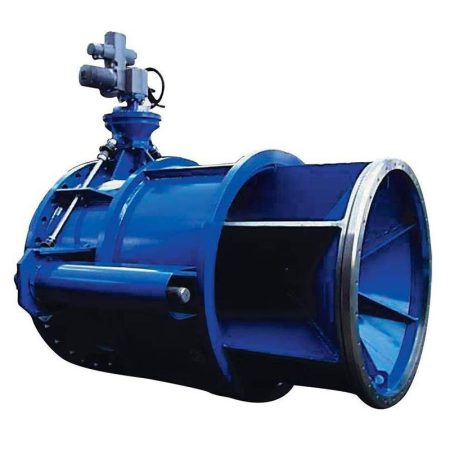
Dams
Plunger valves are very important in dams. Engineers use them to control water from the reservoir. They help with irrigation and stop floods. In hydroelectric dams, plunger valves help make power. They also protect equipment from sudden pressure changes. These valves seal tightly, so they do not leak. This helps save water. Their design stops rust, so they work well in tough places. Operators pick plunger valves because they last long and can handle lots of water.
Modern dams use smart systems to control and watch plunger valves. These valves can connect to IIoT platforms for real-time checks. This helps fix problems before they get big. It also saves money and time. Makers now build plunger valves in parts, so teams can change them for each dam. These features keep dams safe and strong. Plunger valves also help shut off water fast in emergencies. They can lower pressure quickly, which is important for safety.
Note: Plunger valves in dams help save water and energy. This makes them a good choice for the environment.
Water Supply Networks
Plunger valves help control pressure in water supply systems. They keep water moving safely in big pipes. Operators use these valves to lower high pressure. This stops leaks and saves water. Plunger valves work well in large pipes, often bigger than DN 400. They are good when exact flow control is needed.
These valves use outside actuators. The actuators can be manual, pneumatic, or electric. This lets workers change the valve opening as needed. The system uses data from sensors to keep pressure just right. In important places, sensors talk to the system to stop water loss. Plunger valves can be put side by side to move more water. They can also be put in a row to handle big pressure drops. This makes them useful in tricky water networks and treatment plants.
A normal setup has a plunger valve, flow meter, pressure sensors, and control cabinets. Bypass lines keep water flowing during repairs. With good control, plunger valves help water systems work better and waste less water.
Flow Control Stations
Flow control stations use plunger valves to manage flow and pressure. These valves have a straightway design. The plunger moves up and down to change the flow. This gives very accurate control. Operators can pick the outlet type to stop cavitation and help the valve work better.
Plunger valves in these stations are made from strong materials. They use ductile cast iron and stainless steel. Special seals help them last a long time and work well. These valves are used for irrigation, drinking water, and cooling in factories. In some projects, like at the Rur Dam Schwammenauel, new plunger valves worked better than old ones. They made the system stronger and easier to fix.
Design tools help engineers pick the best valve for each job. This makes sure the system works well, even with lots of water. Plunger valves give exact control, so they are very important in modern flow control stations.
Case Studies
Engineers have put plunger valves in many big water projects. These real-life stories show how the valves help systems work better and safer.
Case 1: Plunger Valves in a Major Dam
A big dam in South America needed to control water better. The team put in plunger valves to manage water from the reservoir. These valves let workers control flow exactly, even when needs changed fast. Operators kept the reservoir level steady and kept turbines safe from sudden water surges. The dam had less erosion because the valves spread water out like a spray. This helped slow down the water and stopped damage from fast flow. The plunger valves also cut down on cavitation, which kept pipes and equipment from wearing out.
Operators said there were no leaks or rust after years of use. The dam’s team only checked seals and cleaned the valves to keep them working well.
Case 2: Urban Water Supply Upgrade
A city in Europe improved its water system with plunger valves. The project used the valves in big pipes that sent water to many homes. The valves changed to match different flow and pressure needs. This kept the system steady during busy times and emergencies. The new valve design made water move smoothly and cut down on rough flow. Operators saw fewer leaks and less water wasted. The team had a simple job: check for damage, clean to stop clogs, and oil moving parts. This helped each valve last longer.
Case 3: Hydropower Plant Efficiency
A hydropower plant in Asia used plunger valves to control water to turbines. The dam sent water through these valves to make electricity. The valves worked well under high pressure and kept water flow steady. This steady flow helped the plant make more power and save energy. The plant’s workers liked the valves because they were strong and worked well. They had no big problems and very little downtime.
| Project Type | Location | Key Benefit | Outcome |
|---|---|---|---|
| Dam | South America | Energy dissipation, safety | Less erosion, no leakage |
| Water Supply Network | Europe | Adaptability, reliability | Fewer leaks, longer valve life |
| Hydropower Plant | Asia | Steady flow, durability | Optimized turbine output |
These stories show that plunger valves work well in big pipes with lots of water. Using them in dams, water networks, and power plants proves they are useful in real life. Operators trust these valves because they are exact, safe, and last a long time.
Practical Considerations

Installation
Engineers need to plan well before putting in plunger valves. They look at the pipe size and how much water will flow. Teams use big tools to lift and set the valve in place. Workers line up the valve with the pipe so it does not leak. They bolt the valve down and check the seals for tightness. Some jobs need extra supports because the valves are heavy. Teams test the valve to see if it opens and closes right.
In irrigation jobs, workers put plunger valves in faraway places. They use cranes and wear safety gear to stay safe. Teams follow safety rules to keep people and tools safe. They check where the valve sits and connect sensors to control panels. Good planning helps teams make fewer mistakes and saves time.
Tip: Always look at the valve seals and supports before starting the system. This helps stop leaks and keeps things from breaking.
Maintenance
Plunger valves need regular checks to keep working well. Operators look at the seals and moving parts for any damage. They clean the valve to get rid of dirt and junk. Workers put oil or grease on moving parts so they move easily. Teams change old seals and rings to stop leaks. They check if sensors and actuators send the right signals.
How often you check the valve depends on how much it is used. In busy irrigation, workers check valves more often. They write down each check and repair in a record. Fixing small problems fast stops bigger ones later. Teams use simple tools for most jobs. They follow the maker’s guide for each valve type.
| Maintenance Task | Frequency | Tools Needed |
|---|---|---|
| Seal Inspection | Monthly | Flashlight, gauge |
| Cleaning | Quarterly | Brush, cloth |
| Lubrication | Quarterly | Oil, grease |
| Sensor Check | Monthly | Multimeter |
| Seal Replacement | As needed | Wrench, spare parts |
Challenges
Operators have some problems when using plunger valves in big water systems. Heavy valves are hard to move and put in place. Teams need special tools to lift and set them. In faraway irrigation sites, it can be hard to get tools and spare parts. Bad weather can slow down work and repairs.
Some valves work with high pressure, which can be dangerous. Teams must follow safety steps to stay safe. Dirt and junk can block the valve and break it. Operators need to clean the system often. In smart systems, sensors might not work or give wrong signals. Workers need training to fix these problems fast.
Note: Good planning and regular training help teams fix most problems. Keeping spare parts and tools ready makes repairs faster.
Cost-Benefit
Plunger valves cost more to buy at first than some other valves. But over time, they save more money. Engineers and workers think about both the price to buy and put in the valve and the money saved later.
Key Cost Factors:
- Purchase Price: Plunger valves are more expensive than butterfly or gate valves. The higher price is because of strong materials and a smart design.
- Installation: These valves need trained workers and special tools. It takes more time and planning to install them.
- Maintenance: Plunger valves do not need repairs as often. Their parts last longer, so teams spend less on fixing them.
- Energy Use: The design lets water move easily. This means the system uses less energy to push water.
Main Benefits:
- Long Service Life: Plunger valves use stainless steel and special coatings. These help the valve fight rust and damage.
- Precise Control: Workers can set flow and pressure very exactly. This keeps the system safe and stops water from being wasted.
- Lower Water Loss: Good control means fewer leaks and breaks. Water systems save more water for people to use.
- Reduced Downtime: The strong valve does not break often. Teams spend less time and money fixing problems.
- Operational Savings: Over time, the system uses less energy and needs fewer repairs. These savings grow bigger each year.
| Aspect | Plunger Valve | Butterfly Valve | Gate Valve |
|---|---|---|---|
| Initial Cost | High | Low | Moderate |
| Maintenance Cost | Low | Moderate | High |
| Service Life | Long | Moderate | Moderate |
| Water Loss Prevention | Excellent | Limited | Poor |
| Energy Efficiency | High | Moderate | Low |
Tip: Plunger valves cost more at first, but they save money later. Many water projects get their money back in just a few years.
Operators pick plunger valves for big jobs because the good things last a long time. The valves help keep water systems safe, work well, and stay strong. When teams look at the total cost over the valve’s life, plunger valves are often the best deal.
Smart water managers do not just look at the price to buy. They know plunger valves protect water, lower repair costs, and help use water wisely. This makes them a smart pick for today’s water systems.
Plunger valves help control water flow very exactly. They also manage pressure well in big water projects. Engineers notice better efficiency and less water lost. These valves work well in important systems. Operators trust them because they last a long time. Water managers should think about plunger valves for new projects. These valves help keep systems strong and protect resources.
Plunger valves make water systems more reliable than before.
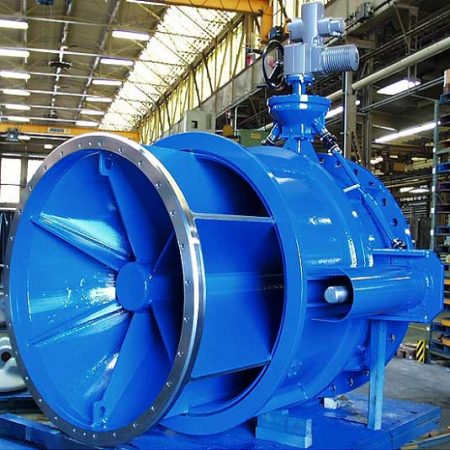
FAQ
What makes plunger valves suitable for large-scale water projects?
Plunger valves give very exact control of flow and pressure. They are built strong and have a smart design. This helps them work with lots of water and big pressure changes. Engineers pick these valves because they last long and work well in tough places.
How do plunger valves help reduce water loss?
Plunger valves keep the pressure steady and stop sudden jumps. This helps stop leaks and pipe breaks. When these valves are used, less water is wasted and there are fewer repairs.
Can plunger valves handle dirty or debris-filled water?
Yes, plunger valves can work with water that has some dirt or debris. Their design helps stop clogs. Cleaning and checking the valve often keeps it working well, even in hard conditions.
Are plunger valves easy to automate?
Engineers can add electric or hydraulic actuators to plunger valves. These parts connect to sensors and control panels. With automation, workers can run the valve from far away and make quick changes.
What maintenance do plunger valves require?
Operators check the seals, clean moving parts, and add oil or grease. They change seals when they get old. Most jobs need only simple tools. Checking the valve often helps it last longer and work better.
How do plunger valves compare to butterfly valves in energy efficiency?
Plunger valves usually use less energy because they control flow smoothly. Their design makes less turbulence and lowers pressure loss. This helps save money on running the system over time.
Can plunger valves be used in both new and existing systems?
Yes, engineers put plunger valves in new systems and also in old ones. Their design lets them fit many pipe sizes and setups.
What safety features do plunger valves offer?
Plunger valves have strong seals, materials that do not rust, and safety parts like check valves. These things help protect equipment and stop accidents in high-pressure systems.
